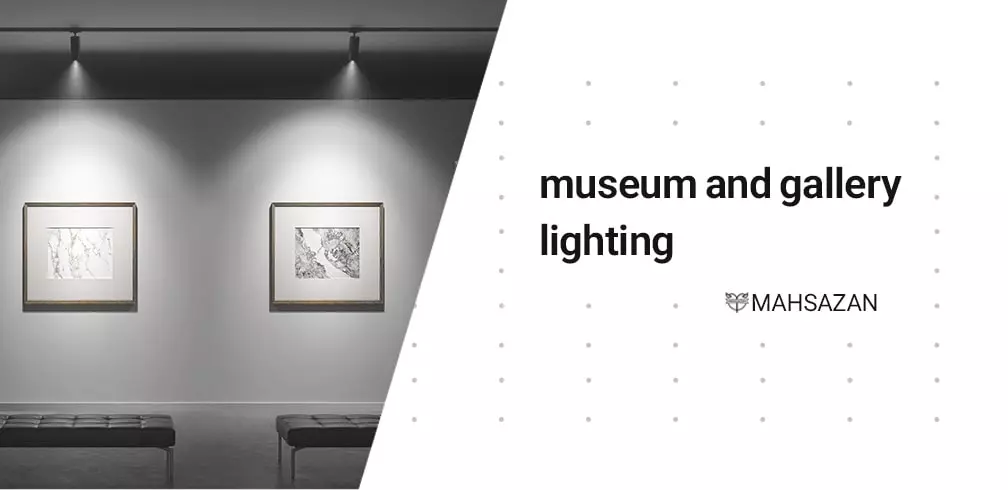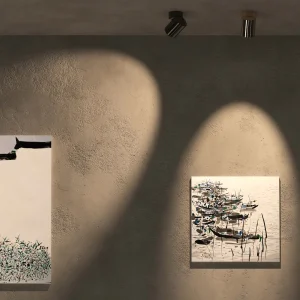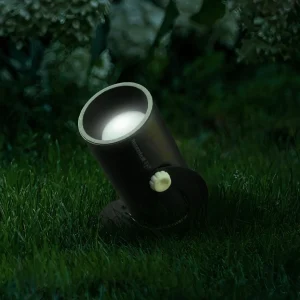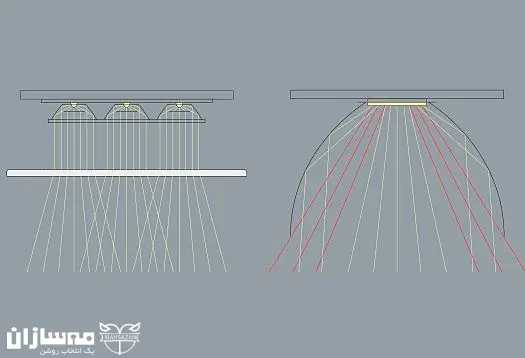Museum and Gallery Lighting: The Result of Combining Art and Technology…
Collecting, preserving, researching, and displaying artworks—these four fundamental principles of museum activities were established over 200 years ago during the European Enlightenment and continue to shape the framework for museums, galleries, and private collections today. Nowadays, each of these areas benefits from high-quality LED lighting, ensuring appropriate illumination without compromising the visual experience or the preservation of artworks.
However, the possibilities of lighting design in museums and galleries are not limited to displaying artworks. Proper lighting can elevate exhibition spaces beyond mere display areas, transforming them into high-quality cultural brands. From exhibition halls to sculpture gardens, museum shops, and cafes, professional lighting can create a unique and lasting experience for visitors. Therefore, lighting design in museums and galleries requires special attention to the type of light, its intensity, and how it is distributed in the space to create a safe, beautiful, and fully functional environment tailored to the needs of displaying artworks.
The Importance of Museum and Gallery Lighting
- Thinking Based on Lighting Functions:
The importance of museum and gallery lighting stems from its ability to clearly reveal the intricate and delicate details of artworks, especially for objects with unique textures or colors that require special attention. Proper lighting also highlights specific features of the objects, ensuring that each piece of art can take center stage and be examined from various angles.
Of course, museum lighting must fulfill a variety of needs, with one of its primary responsibilities being to showcase artworks in the best possible way. In every project, lighting designers face the challenge of integrating standard requirements, economic goals, structural conditions, and design aspects into a cohesive concept. The scope of lighting responsibilities extends beyond typical exhibition halls, encompassing areas such as the museum entrance, building facade, outdoor art installations, as well as spaces like lobbies, cafes, and museum shops.
A theoretical model of lighting functions evaluates light quality beyond quantitative metrics such as illuminance. This approach separates lighting from static frameworks and fixed architectural elements, focusing instead on how spaces are used. Such an approach allows for identifying the role of lighting in each section: Should the space be inviting, evoke a sense of discovery, preserve culture, be entertaining, or serve as a place for relaxation and study?
At the outset of any museum lighting project, designers should ask these three fundamental questions for each functional area:
- What is the cultural, architectural, or functional significance of this space?
- How can lighting optimize the display of cultural assets?
- Which lighting strategies and techniques are suitable for designing the lighting in this space?
Types of Lighting in Museums and Galleries
-
Direct Lighting: This method focuses light directly on specific objects, making it ideal for highlighting fine details and unique features of artworks. It is particularly effective for showcasing elements like paintings or sculptures, drawing visitors’ attention to the most important aspects. Direct lighting works best for objects with distinctive colors or intricate textures.
-
Indirect Lighting: In this technique, light is reflected off surfaces such as ceilings or walls before illuminating the space. Indirect lighting creates a soft, uniform glow, making it suitable for environments where a calm and harmonious atmosphere is desired. It also enhances visitor comfort by preventing harsh glare that could damage artworks.
-
Backlighting: This method involves placing light behind objects to create contrast and depth. It enhances visual effects and reveals hidden details in artworks, making it particularly effective for displaying glass or transparent pieces.
-
Dynamic Lighting: This type of lighting involves variations in intensity and movement, significantly enhancing the visitor experience. Moving lights or periodic shifts in brightness can add a captivating effect, especially in galleries that rotate exhibitions over time.
Lighting and Artwork Preservation
Lighting is essential for showcasing artworks, but it must be carefully managed to prevent damage and ensure their longevity. One of the most significant threats to artworks, especially in museums and galleries, is UV light, which can cause color fading, pigment breakdown, image dullness, and even material deterioration. This is particularly harmful to delicate objects such as paintings, textiles, and paper.
To protect artworks, soft and controlled lighting is crucial. Using low-intensity light sources, such as LED lamps, significantly reduces the risk of light-induced damage. Additionally, UV filters are highly effective in shielding objects from direct exposure to harmful UV rays. These filters absorb a portion of UV light, preventing it from reaching and degrading valuable artworks.
Selecting the right light sources is also vital. Different materials, such as paper, fabric, and pigments, require specially calibrated lighting with limited spectral output to minimize damage. Implementing these protective measures ensures that artworks remain preserved for extended periods while maintaining their original beauty and integrity.
Advantages of Using LED in Museum and Gallery Lighting
- Energy Efficiency – LEDs consume significantly less energy compared to traditional lamps, reducing electricity costs.
- Long Lifespan – LEDs last much longer, minimizing the need for frequent replacements and lowering maintenance expenses.
- Low Heat Emission – LEDs produce minimal heat, helping maintain an optimal temperature in museums and galleries.
- No Harmful UV & IR Radiation – LEDs do not emit harmful UV and IR rays, preventing damage to delicate artworks.
- Precise Light Control – Adjustable brightness and intensity allow for optimal illumination of artworks.
- Durability & Stability – LEDs are resistant to shock and vibrations, making them ideal for museum and gallery environments.
Astaria Mahsazan Light Fixture
The Astaria Mahsazan light fixture, with its modern design and high-quality steel sheet construction, is an ideal choice for environments requiring durable and resilient lighting. With an IP66 protection rating, it is resistant to dust and water ingress, making it suitable for outdoor and industrial applications.
One of the standout features of this product is its concealed light source, which provides uniform and glare-free illumination. Its versatile installation options allow it to be adapted to different environmental needs.
If you are looking for efficient, durable lighting with a unique design for your projects, the Astaria Mahsazan light fixture is an excellent choice.
This product is particularly suitable for spaces that require high-quality lighting without direct glare, ensuring a visually comfortable experience for visitors.
Projection or Reflection?
Floodlights, projectors, and wall washers are versatile and efficient tools for impactful artistic presentation. The quality of lighting technology not only affects precise light distribution and enhances the visual experience but also plays a crucial role in economic efficiency and reducing long-term installation costs.
When comparing the efficiency of light sources, key performance indicators should be evaluated based on identical lighting tasks. Among these, optical systems that use lenses for light projection offer significant advantages in both quality and quantity compared to traditional reflector-based solutions.
We have thoroughly analyzed these advantages in the article “Comparison of Lighting Technologies.”
Conclusion
Proper lighting in museums and galleries plays a crucial role in enhancing visitors’ experiences and preserving artworks. By utilizing the right techniques and advanced technologies such as LED equipment, an attractive and safe environment for displaying art can be created. Adhering to lighting principles not only highlights the intricate details of artworks but also prevents potential damage to delicate materials.
Ultimately, the right lighting contributes to establishing the perfect atmosphere in museums and galleries, offering visitors a unique and memorable experience. If you are designing or upgrading your museum or gallery lighting, consulting with lighting experts is highly recommended to benefit from professional guidance and solutions.
Source: erco




